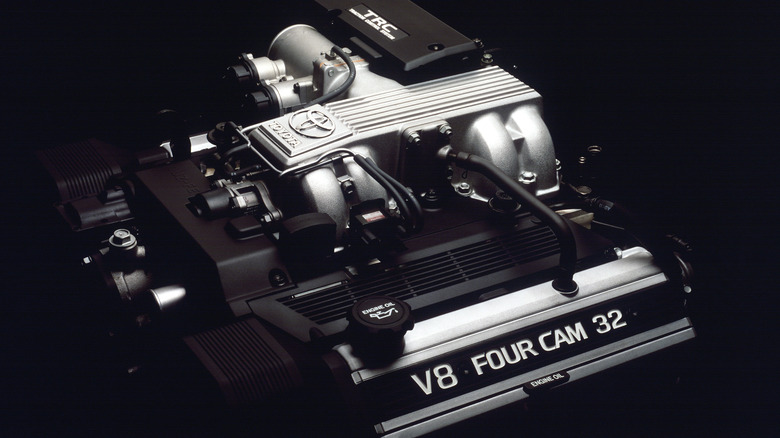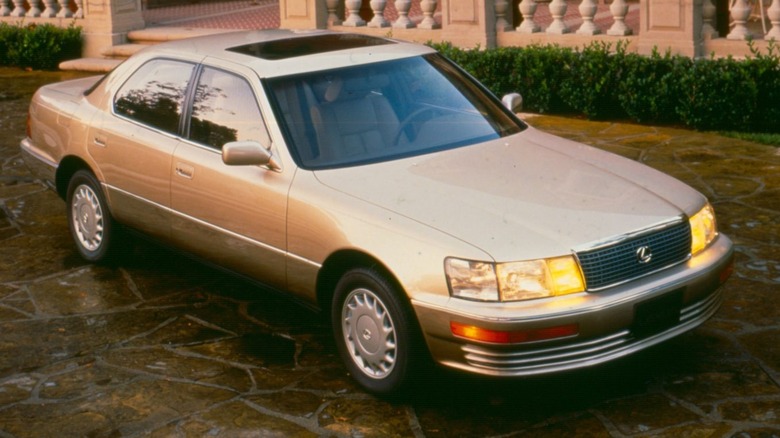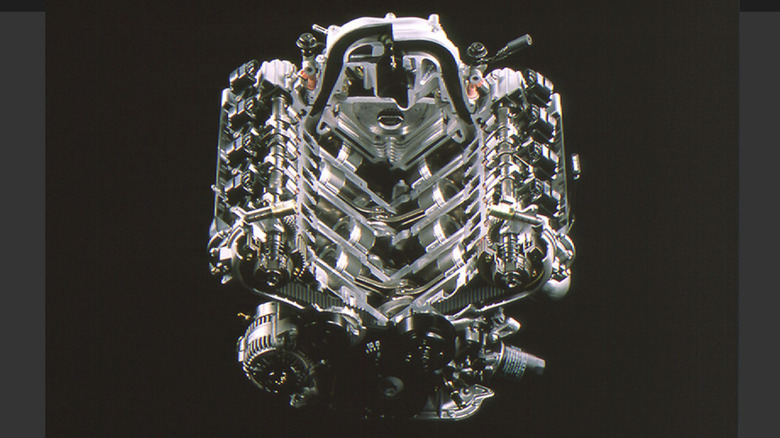Here's What Made The Lexus/Toyota 1UZ-FE Engine So Special
In the six years before the Lexus brand debuted, Toyota spent nearly $1 billion on something called "Circle F" or Project F1 — also known as "Flagship 1." Over 900 experimental engines were produced, and 450 individual vehicles made it to the prototype stage during that time, but only two cars made it to market: the Lexus ES 250, and the LS 400.
Lexus needed to come to market with a car that could compete with established luxury brands like Mercedes-Benz and BMW. So when the Lexus brand took center stage at the 1989 North American International Auto Show in Detroit, it debuted with a 1UZ-FE-powered LS 400. The ES 250 was smaller and more affordable, so it wouldn't debut for a few more months.
The LS 400, however, took the proud role as Lexus' original flagship vehicle — the first face it showed to the world, and the result of years of work. It was powered by a 4.0-liter V8 called the 1UZ-FE (or 1UZ), which was the result of a long and rigorous development process. At the heart of its success were two key virtues: build quality, and reliability.
Lexus' reputation of build quality
A big, comfortable highway cruiser like the LS 400 needed to swaddle drivers and passengers — and it sure did. Utterly quiet at both idle and highway speed, the 1UZ-FE was an ideal powerplant for drivers who wanted isolation from any crude noises or vibrations.
The 4.0-liter V8 only produced 256 horsepower and 260 pound-feet of torque: A decent amount by the standards of the day, but more importantly, it delivered that power without any significant drama. The 1UZ used a crankshaft with eight counterweights — two more than were typically used on V8 engines at the time — making it ultra smooth across the rev range.
The 1UZ used unique cam followers in the valve train to reduce valve train inertia and keep things smooth at high revs. The ECU for the transmission was even programmed to communicate with the engine so that ignition timing would be momentarily decelerated during gear changes, making for exceptionally smooth upshifts. The result of all this precision engineering? A car that could eat up highway miles without wearing out the driver.
All that luxury, without losing reliability
Toyota, the automaker behind Lexus, had a reputation for reliability even back in the 1980s — so on top of being refined, the 1UZ-FE engine had to be highly dependable. As a result, the 1UZ-FE was famous for being one of the most reliable engines Lexus and Toyota have ever built. Many owners have regularly reported several hundred thousand miles coming and going without issue on these engines, with one particularly viral LS 400 amassing over one million miles on the odometer.
The engine's longevity should come as no surprise, though; especially to the engineers who tested the 1UZ-FE, putting over a million hours of driving in extreme conditions on the clock well before its original debut.
Even before its first vehicle debut, the brains behind the Lexus brand knew that they had to set a high bar and keep it there — and the story is the same with the 1UZ-FE engine. More than just an excellent engine for the luxurious and plush LS 400, the 1UZ powered the GS 400 and the SC400 — a car that inspired one of Lexus' most infamous taglines: "The Relentless Pursuit of Perfection."


